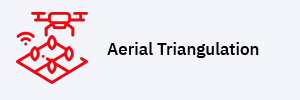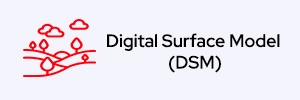Breaking New Ground with WorldView-3
DigitalGlobe is going to add WorldView-3 to its satellite constellation in support of the NGA’s EnhancedView program. ITT Exelis is currelntly building the imaging system, which will include a sensor subsystem and an optical telescope unit, for DigitalGlobe’s latest earth-imaging satellite. WorldView-3 is slated for launch in 2014, and will expand DigitalGlobe’s fleet to four remote-sensing satellites. Notwithstanding the impending acquisition of competitor GeoEye which will add GeoEye-1, Ikonos and GeoEye-2 to it burgeoning portfolio of satellites.
Artist’s impression of WorldView-3 sensor. Courtesy: DigitalGlobe
WorldView-3 Bands
WorldView-3 will be the world’s first multi-payload, super-spectral, High resolution commercial satellite ever to be launched. The sensor capability enhancements planned for the WorldView-3 satellite are likely to be ‘game changers’ if industry experts are to be believed.
Below is the a preview of the extensive spectral coverage that WorldView-3 promises to provide.
| Panchromatic | Panchromatic: 450 – 800 nm |
| Multispectral (8 Bands) | Coastal : 400 – 450 nm Blue : 450 – 510 nm Green : 510 – 580 nm Yellow : 585 – 625 nm Red : 630 – 690 nm Red Edge : 705 – 745 nm Near-IR1 : 770 – 895 nm Near-IR2 : 860 – 1040 nm |
| SWIR Bands (8 Bands) | SWIR-1 : 1195 – 1225 nm SWIR-2 : 1550 – 1590 nm SWIR-3 : 1640 – 1680 nm SWIR-4 : 1710 – 1750 nm SWIR-5 : 2145 – 2185 nm SWIR-6 : 2185 – 2225 nm SWIR-7 : 2235 – 2285 nm SWIR-8 : 2295 – 2365 nm |
| CAVIS* Bands(12 Bands) *Clouds, Aerosol, Vapor, Ice, Snow |
Desert Clouds : 405 – 420 nm Aerosol-1 : 459 – 509 nm Green : 525 – 585 nm Aerosol-2 : 620 – 670 nm Water-1 : 845 – 885 nm Water-2 : 897 – 927 nm Water-3 : 930 – 965 nm NDVI-SWIR : 1220 – 1252 nm Cirrus : 1350 – 1410 nm Snow : 2105 – 2245 nm Aerosol-3 : 1620 – 1680 nm Aerosol-3 : 2105 – 2245 nm |
WorldView-3 will have following other Design and Specification features. Particularly interesting are highest Pan resolution of 0.31m, 30m CAVIS bands and a locational accuracy of 3.5m CE90 comparable to the GeoEye-1
| Orbit | Altitude: 617 km Type: SunSync, 1:30 pm descending Node Period: 97 min. |
| Life | Spec Mission Life: 7.25 years Estimated Service Life: 10 to 12 years |
| Sensor Resolution (or GSD, Ground Sample Distance; off-nadir is geometric mean) |
Pan Nadir: 0.31 m(20° Off-Nadir: 0.34 m) Multispectral Nadir: 1.24 m(20° Off-Nadir: 1.38 m) SWIR Nadir: 3.70 m(20° Off-Nadir: 4.10 m) CAVIS Nadir: 30.00 m |
| Dynamic Range | 11-bits per pixel Pan and MS 14-bits per pixel SWIR |
| Swath Width | At nadir: 13.1 km |
| Attitude Determination and Control |
Type: 3-axis Stabilized Actuators: Control Moment Gyros (CMGs) Sensors: Star trackers, precision IRU, GPS |
| Pointing Accuracy and Knowledge |
Accuracy: <500 m at image start/stop Knowledge: Supports geolocation accuracy given below |
| Retargeting Agility | Time to Slew 200 km: 12 sec |
| Max Contiguous Area Collected in a Single Pass (30° off-nadir angle) |
Mono: 66.5 km x 112 km (5 strips) Stereo: 26.6 km x 112 km (2 pairs) |
| Revisit Frequency (at 40°N Latitude) |
1 m GSD: <1.0 day 4.5 days at 20° off-nadir or less |
| Geolocation Accuracy (CE90) |
Predicted <3.5 m CE90 without ground control |
| Capacity | 680,000 km2 per day |
These advanced features are likely to help in enhanced Mapping, Land Classifications, Disaster Preparedness/Response, Feature Extraction/Change Detection, Soil/Vegetative Analysis, Geology: Oil & Gas, Mining, Environmental Monitoring, Bathymetry/Coastal Applications, Identification of Man-made Materials, Superior Haze PenetrationThese new ground breaking features are likely to benefit a lot of markets.












.png)



.png)
.png)









.png)










